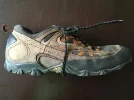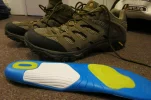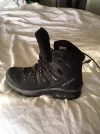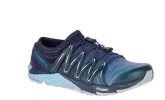Lulumom
New Member
- Time of past OR future Camino
- March 2018
Hello,
My husband and I are doing our first Camino in early April. I have been breaking in a pair of lightweight waterproof hiking boots but whenever we walk (we live in northern CA and have done some fairly intense hikes, including Lassen) I always find myself leaning towards wearing my extremely comfortable Nike Flyknit Free running shoes.
I was planning to bring these as my back up shoes but my husband says I need to get trail runners or something more substantial. I've looked at some of the trail runners and don't see a massive difference between these and the Nikes. I feel like if I need support or it's wet, I could wear the boots and if it is dry and mainly flat, I could wear the Nikes.
So...I am asking those with experience. What do people think? Here is a link to Flyknits on amazon just in case you're interested. https://www.amazon.com/gp/product/B075TJP1JL/?tag=casaivar02-20
Thank you!
My husband and I are doing our first Camino in early April. I have been breaking in a pair of lightweight waterproof hiking boots but whenever we walk (we live in northern CA and have done some fairly intense hikes, including Lassen) I always find myself leaning towards wearing my extremely comfortable Nike Flyknit Free running shoes.
I was planning to bring these as my back up shoes but my husband says I need to get trail runners or something more substantial. I've looked at some of the trail runners and don't see a massive difference between these and the Nikes. I feel like if I need support or it's wet, I could wear the boots and if it is dry and mainly flat, I could wear the Nikes.
So...I am asking those with experience. What do people think? Here is a link to Flyknits on amazon just in case you're interested. https://www.amazon.com/gp/product/B075TJP1JL/?tag=casaivar02-20
Thank you!























